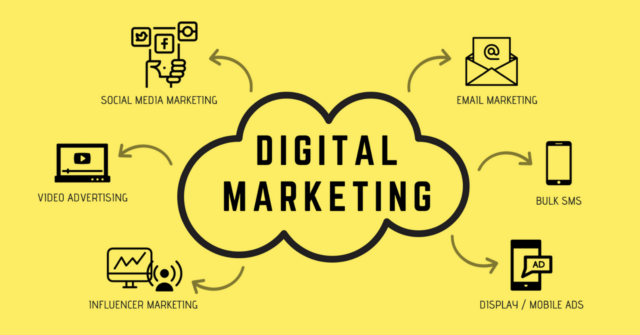With powerful marketing tools and an expansive potential reach, social media is a goldmine for businesses. Yet having a social media presence alone is no longer enough as organic reach declines and competition grows fiercer. Establishing an identity and a sense of community is the key to standing out on social media for businesses.
The more you stand out, the better your chances of attracting customers. But if you’re new to it, you may not know the best way to incorporate social media into your overall strategy. While the importance of social media marketing for businesses is already well-known, marketing is just one piece of the puzzle. You also need a holistic approach that leverages the channel to support every other aspect of your business
Benefits of social media for business
The benefits of social media aren’t one-size-fits-all. That said, here are five upsides that brands can see from a smart social presence.
- Create meaningful connections: Social media opens a two-way communication channel between brands and their audience. Use it to answer questions, handle customer service queries and gather feedback. These interactions help you build a stronger connection with your audience.
- Show off your products: From testimonials to tutorials and beyond, social media is a prime place to show off products. Use the opportunity to highlight what makes your product great and how it can add value to your customers.
- Increase your brand’s visibility and reach: Social media drives product discovery, as highlighted in the latest social media statistics. Many potential customers will see your brand’s TikTok or Instagram before they see your website. They may learn about your brand when they come across your posts in their Explore or For You pages. Or they may even find you through a friend’s or influencer’s post. So having an established social presence is crucial to boost your visibility and reach.
- Gather real-time insights: Social media is a treasure trove of data points that are all out in the open. Learn more about your audience’s pain points and interests from their conversations. Discover the latest trends in your industry and the most popular types of content. From your audience to competitors, there’s no better place to conduct market research.
Setting social media goals for your business
These social media benefits don’t happen by accident. Instead, they’re a result of a strategic, goal-driven approach to using social media. That’s why it all starts with a goal.
Keep in mind that social media goals are unique as they’re dependent on your business. Also, you can set multiple goals that actually overlap and influence each other. Goals affect everything from your content strategy to the social platforms you use.
There’s no “right” way to set goals but the process can be a lot. A few tips to get you started:
- Start with the big picture before getting granular. Why does your business need a social presence? What resources do you need to make those results a reality?
- Look at your target audience and customer personas. For example, how are your customers using social media? Is your audience glued to TikTok or Instagram or another social media platform? What types of content do they want to see? Brainstorm how using social media for business can help you reach your audience.
- Think about your business’ holistic marketing strategy and how social media fits in.
- Tie your social media goals to actual metrics and KPIs. This is a big one in an era where marketers are under pressure to prove ROI. From engagement to traffic and beyond, there’s plenty to track.
Example social media goals and KPIs for B2B brands
- Brand awareness (growth, engagements) and consideration (link clicks, web traffic)
- Lead generation (marketing qualified leads)
- Competitor analysis (share of voice) and market share
- Audience engagement (likes, replies, shares, etc.)
- Drive customer loyalty (+ CX) and reduce churn
- Customer service efficiencies (engagement speed and rates)
- Reputation management
- Customer satisfaction
- Positive reviews
- Customer sentiment online
Example social media goals and KPIs for B2C brands
- Brand awareness (growth, engagements) and consideration (link clicks, web traffic)
- Find new sales opportunities (conversations to join)
- Uncover brand expansion opportunities
- Reputation management (engaging with inbound messages)
- Increase customer satisfaction
- Inspire customer loyalty
- Product launch analysis
- Competitive analysis
How to create a social media strategy for your business
Once you have your goal in place, it’s time to put together a strategy to achieve said goal. Let’s break down the essential steps to building a successful social media strategy for your business.
Step 1: Coordinate with relevant teams
Based on the goals you’ve outlined earlier, identify which departments or teams will be most relevant to your social media efforts. For example, you may have a marketing team that will handle the social media strategy, a customer service team that will want to respond to customer queries and a sales team that may want to nurture leads through your social content.
Work with each department to identify how social media can deliver the most value for them. Ask each team what they want to find out from social media. How do they want to use it? How can your brand’s social media presence serve them? This will help you come up with a plan that covers all the sides of the business.
Your sales team, for instance, may want to find and nurture leads through social media. So your strategy may involve identifying key purchase conversations on social media.
Step 2: Identify key platforms
Do some audience research to understand which social platforms your audience spends the most time on. Gain an understanding of the various platforms your audience uses and how each one caters to their specific interests.
This will make it easier to streamline your social media efforts as you can come up with a suitable strategy that covers each platform in a relevant, targeted way.
Consider also these kinds of questions to determine how these platforms will work under teams’ responsibilities: Which platform do you want to use to provide customer support? Do you want to include LinkedIn to attract potential employees?
Step 3: Set up a dedicated social media team(s)
Now the biggest question is: Who’s going to execute your social media strategy?
Many businesses use social media mostly for marketing. So the marketing team handles most social media tasks. But what if you want to use social media for customer support? Or what if your marketing team doesn’t know how to handle sales queries?
It’s important to have a dedicated team to handle key social media tasks relevant to each department. You may set up a team that handles all things social media. Alternatively, you may embed social media experts into various internal teams. The exact social media team structure depends on what works for your business.
15 social media tips for your business
1. Be original
Nothing beats originality if you want to stand out on social media. Yes, jumping in on trends and recreating popular memes are a quick way to drive engagement. And we’re not telling you to abandon that approach altogether either. However, you need a publishing strategy that’s unique to your business.
In fact, our 2024 Content Benchmarks Report found that original content is what makes a brand memorable on social. Come up with unique and creative ways to get your message across.
2. Show your product/service in action
So what original content can you create for social media?
Our 2024 Social Media Content Strategy Report found some interesting answers. Original content that shows your product or service in action is the biggest factor that compels consumers to buy.
Keep your content equally informative and entertaining. According to the report, 66% of social users find that edutainment is the most engaging type of brand content. We recommend creating original videos showing what your product is capable of. Demos, how-tos, walkthroughs and tests are just great ideas of how you can apply edutainment in your next social media posts.
3. Keep people entertained
Speaking of entertainment, most social media users aren’t looking to be sold to. They just want to get a few laughs or find something to pass the time. So the best way to hook them in is by keeping them entertained.
Keep your Feed balanced with content that provides some lighthearted entertainment. A few ideas to get started would be: memes, comedy skits, ASMR videos and polls!
4. Make user-generated content work for you
Content from your customers serves a double purpose of informing people and earning their trust. It can show them exactly what your product or service is capable of in a real-world setting. Plus, since the content comes from other consumers, it adds an extra layer of trustworthiness.
Bonus point for saving your team the trouble of having to produce original content from scratch. Balance your Feed with user-generated content featuring your products.
5. Build a human, people-first social presence
This might seem like a no-brainer.
That said, busy businesses tend to get stuck in a “copy-and-paste” approach to social. Comments and social captions should feel like they were written by a real person, not a robot.
Injecting personality into your posts is a low-hanging way to relate to your audience. Beyond that, personalizing your replies to people shows that you’re there to help them. This is one of the best ways to use social media for business to build connections.
In fact, people expect brands to personalize their responses. According to the 2025 Sprout Social Index™, consumers say companies should make personalized customer service their #1 social media priority in 2025.
6. Look at your social presence as a resource (not just a promotional channel)
Don’t make the mistake of treating your social presence as a dumping ground for offers. Building an audience means being genuinely helpful, not salesy.
Many of the best practices across social media treat their accounts as resources. That means:
- Creating actionable, educational content (think: how-tos, tutorial videos)
- Answering questions and sharing advice with your audience
- Sharing company updates and keeping customers in the loop
Imagine that your social accounts are your first touchpoint with a potential customer. Sharing resources makes a better first impression than screaming “BUY NOW!”
7. Show up consistently
This applies to both publishing content and engaging with customers.
Conventional wisdom says that social media algorithms reward consistency. Sprout’s own research on the best times to post on social media confirms this. If nothing else, letting your social feeds gather cobwebs isn’t a good look.
Neither is leaving your followers hanging. Making a conscious effort to reply to questions and comments is crucial. This is why you need to keep a close eye on your @tags and social notifications.
In fact, the Content Benchmarks Report found that this is much more impactful than publishing frequently. 37% of consumers think that the most memorable brands directly engage with their audience on social.

In fact, the Content Benchmarks Report found that this is much more impactful than publishing frequently. 37% of consumers think that the most memorable brands directly engage with their audience on social.
